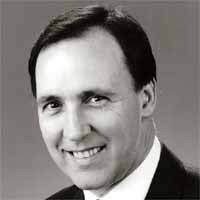The proposal is contained in the report of Prime Ministerial Task Group on Emissions Trading, due to be handed to the Prime Minister this afternoon.
The 200-page document, sent from the printers to the Task Group yesterday, is said to be easy to read and to look different to a typical government report.
On several issues it shies away from making specific recommendations...
For instance while it says it will be necessary for the government to adopt a long-term target for the level at which Australia’s annual greenhouse gas emissions should be stablised it is thought not to specify that target, saying instead that further modelling is required.
Under the proposed system the energy companies that at present emit greenhouse gasses would be given long-term permits to continue much of those emissions. The permits would have a mix of expiry dates, some lasting for decades.
In addition energy companies would be able to buy top-up annual permits without limit. The price at which the government sold the extra annual permits would be adjusted every few years and would put a ceiling on the price for which permits traded on a permit exchange.
Importantly the government would adopt no specific target date for achiveing its greenhouse gas stablisation target, allowing it the flexibility to achieve the target early or late depending on the state of knowledge at the time.
The Prime Minister is expected to release the report within days and commission a group of officials to turn its ideas into policy.
The officials group is expected to report within months, ahead of the election.
Mr Howard set up the Task Group in December with the aim of advising on the nature and design of a workable global emissions trading system in which Australia could take part. Instead the group is believed to have recommended that Australia introduce a stand-alone trading system over which it would have sole control.
The system will replace those introduced by state governments and will not require international trading or the ratification of the Kyoto Protocol.
The industry-heavy Task Group included executives or board members from the mining giants Xstrata and BHP Billiton, as well as Qantas and the National Australia Bank.
It was chaired by the head of the Prime Minister’s department Dr Peter Shergold and included on it the head of the Tresury Dr ken Henry and the heads of the departments of Environment, Industry, and Foreign Affairs.
The bulk of the corporate submissions to the Task Group supported the concept of an emissions trading scheme, some arguing that there would be new investment in electricity generation until one was introduced.
The Electricity Supply Association of Australia, warned that “coal-fired power stations have physical lives well in excess of 50 years and, if there is an expectation that there may be a future price on greenhouse gas emissions, investors may be unwilling to risk investment in a coal-fired plant.”
“Without a clear greenhouse gas emission policy framework there is a risk that investment in baseload capacity may be deterred,” it said.
The bulk of the corporate submissions to the Task Group supported the concept of an emissions trading scheme, some arguing that there would be no new investment in electricity generation until one was introduced.
The Electricity Supply Association of Australia, warned that “coal-fired power stations have physical lives well in excess of 50 years and, if there is an expectation that there may be a future price on greenhouse gas emissions, investors may be unwilling to risk investment in a coal-fired plant.”
“Without a clear greenhouse gas emission policy framework there is a risk that investment in baseload capacity may be deterred,” it said.
BHP Billiton told the Task Group that it already assessed how each of its new investments could withstand a high, medium, and low price for carbon emissions on the assumption that a permit system would be introduced.
The Labor party last night released a 5-point checklist for an emissions trading system. It said it should be internationally consistent, effective, economically responsible, fair and should start by 2010.









